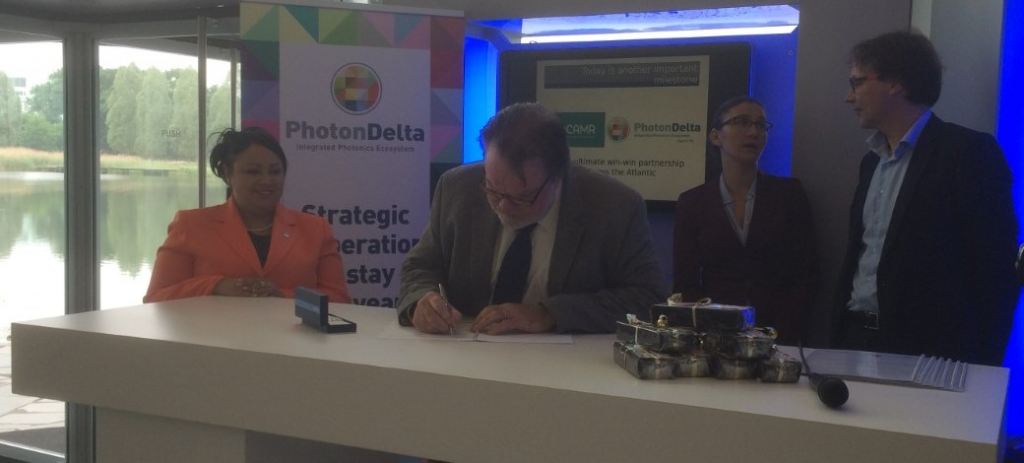
The European Photonics Venture Forum takes place every two years. Each time, a different city is selected to host the event, each city having a connection with the development of photonics, in short: the use of light in a range of high-tech applications. The first forum was held in Rome (2015), Berlin (2017) and Dublin (2018) will follow. This years edition was held on Eindhovens High Tech Campus, where photonic-startups have developed into scale-ups in recent years and where the door to serious funding of photonic development seems to be opening up.
The forums highlight came in the form of Eindhovens Photon Delta signing an agreement with the Consortium for Advanced Manufacturing Research (ICAMR) from Florida. Both institutes will open their own branches in each others facilities. Their future plans involve exchanging knowledge and partaking in each others projects, hoping to help research in photonics progress.

The internet has changed
While the signing of the agreement took center stage in High Tech Campus Congress Center, the conversation in the background, between researchers, investors and policymakers turned to investments and the place photonics has in the world. That place is becoming more evident. “The internet is changing”, says Richard Visser says, CEO at SMART Photonics, an Eindhoven based company specializing in helping develop Semi-Conductorchips capable of working with photonics. “The balance of watching video versus reading text, heavily ways in favour of video. A video demands more data than text does, which, in turn, means there’s an increasing need of datacenters.”

This has lead to a situation where about three percent of the global available electricity goes to datacenters. This number is expected to double each year. Photonics should provide a durable solution to this problem. Johan Feenstra, Director Program Management at Liquavista, an Eindhoven based company developing a new form of electronic displays, compares the situation to automotive industry. “Either the datatraffic will eventually get stuck on increasing demands or datacenters will start eating up too much of our energy. So there’s a problem coming in the future. In the automotive industry there’s a similar reality: the world is bound to run out of oil at one point. Large companies in that industry are now paying attention to that so there’s an increase in research for different, durable fuels. The same seems to be slowly happening in the world of photonics.”
Tricky investment territory
Still, photonics seems to be tricky investment territory. “That’s on account of the technique we work in”, says Dennis Maas, CFO of Eindhoven based EFFECT Photonics, a company working on new photonic systems built on one chip. “Research takes a long time and the projects we work on are expensive. We work on hardware-solutions to problems that are still in the future. It’s a challenge, but an interesting one.”
It’s the ‘less sexy’ side of innovating: working for years on new techniques, expensive work that will only show results after a long time. Both Effect Photonics and SMART Photonics are in their second round of ivestments, looking for amounts ranging from ten to fifty million.
US
“We’ve seen big investments in photonics in the US”, Feestra says. Per capita, it’s estimated that US companies invest five times the amount of money in photonics. Dennis Maas: “Eindhoven and Florida collaborating indicates the Dutch taking photonics far more serious than they used to. It’s a signal that should draw the attention of serious investors in Photonics to Eindhoven.”
Richard Visser: “Photonics isn’t new. It has been in the ground in fiberglasscables for years and research looking into photonics was first started in the universities some twenty years ago. What we are witnessing now however, is that photonics are being developed for a commercial market. That’s exciting. We are now going from idea to product. The time to start applying photonics in everyday life is definitely nearing.”
